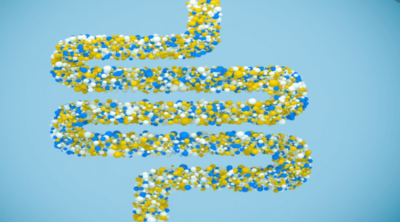
Nystagmus is an eye disorder that can be congenital or acquired. The mode of treatment may vary with the type of nystagmus.
Nystagmus is a condition, which can be defined as the uncontrolled and repetitive jittery movements of the eyeballs. Due to this involuntary and shaky eye movements, nystagmus is also known as ‘dancing eyes’ or jerky eyes’. The pattern of eye movement may vary from one patient to another. It can be sideways, up and down, or circular. In some cases, the eyeballs may slowly move to one side and suddenly shifts to the other. Such movements make it difficult for the eyes to focus properly.
Nystagmus is classified into different types, on the basis of the pattern of eye movements. These types are identified by doctors, after studying the pattern of eye movement in individual patients. Basically, nystagmus is divided into two types – congenital and acquired. While congenital nystagmus develops very early, mostly in the first few months of life, acquired type develops later. It has been observed that congenital nystagmus is often associated with reduced vision or vision loss.
Treatment
The treatment for this condition may vary with the type of nystagmus. Even though nystagmus is considered as a condition with no cure, there are certain methods that may improve vision and other related problems. If nystagmus is caused by use of certain medication or by alcohol intoxication, then avoidance of the cause may treat the problem. In some cases, eye glasses or contact lenses can be of much help in providing the patient a better vision.
The position of ocular muscles can be altered through surgery, so as to reduce the jerky eye movements. In some cases, ocular muscles are paralyzed with botox injections, to provide relief from nystagmus. This is also not practical, as the effect of such injections last for only two to three months, and the patient has to be given general anesthesia before injection. Even biofeedback is used to treat nystagmus, so that the patients learn to control the abnormal eye movements. Acupuncture and vision therapy may prove effective for some people.
In short, treatment for congenital nystagmus is decided by the health care provider, after diagnosing individual patients. The cause for the condition is very important in determining the mode of nystagmus treatment. This is a serious eye disorder, which can affect vision. Apart from that, it is a cosmetic concern as well. So if you notice any such symptom, seek immediate medical attention, and get the problem diagnosed.
Congenital and Acquired Nystagmus
Congenital nystagmus is more common than the acquired type. Studies show that most cases of congenital nystagmus is caused due to problems of the eye, or the pathway that links the eye and the brain. Congenital nystagmus may be associated with other eye disorders, like albinism, aniridia, optic nerve hypoplasia, glaucoma, achromatopsia, congenital cataracts, and coloboma. It has also been observed that congenital nystagmus can develop without any cause, and such cases are called idiopathic congenital nystagmus. In some rare cases, nystagmus can be inherited too.
Contrary to congenital nystagmus that develops early in life, acquired one appears later. Usually, acquired nystagmus occurs as a result of medical conditions, like stroke, multiple sclerosis, head injury, brain tumors, etc. There are many other diseases and disorders, which can cause nystagmus.
Certain medication, like those used for seizures, may also cause nystagmus. While most of the nystagmus patients experience vision problems, they may also feel difficulty in balance and depth perception. They may also acquire unique head positions, so as to achieve a better vision. It has also been noted that this condition can get worse with stress and strain.
Disclaimer: This article is for informational purposes only, and should not be used as a replacement for expert medical advice. Visiting your physician is the safest way to diagnose and treat any health condition.


